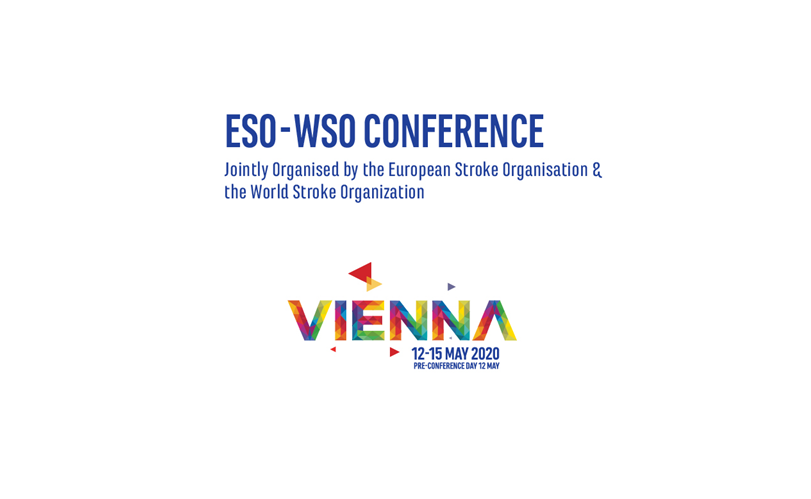
Feb 28, 2020
European Stroke Organisation and World Stroke Organization Conference ESO-WSO 2020
May 12-15, 2020
Austria Center Vienna
Bruno-Kreisky-Platz 1
1220 Vienna, Austria
www.eso-wso-conference.org
The world’s largest and most important congress on the subject of stroke will take place in Austria’s capital from May 12 to 15. For the first time, the European Stroke Organisation (ESO) and the World Stroke Organization (WSO) are jointly organizing this expert conference. Around 6,500 participants are expected, including leading stroke specialists from all over the world. More than 3,000 abstracts have been submitted.
In addition to the initial presentation of large clinical studies, important current topics such as the increasing significance of thrombectomy will be discussed. Another major focus is stroke prevention, which is a global challenge.
For further details on the ESO-WSO 2020, please visit https://eso-wso-conference.org
If you have not yet put a placeholder in your diary for this important event, we encourage you to do so.
Media registration is open – please send an e-mail to reg_esowso20@kenes.com
Press contact
Urban & Schenk medical media consulting
Barbara Urban: +43 664/41 69 4 59, barbara.urban@medical-media-consulting.at
Harald Schenk: +43 664/160 75 99, harald.schenk@medical-media-consulting.at
Yours sincerely,
Prof. Jesse Dawson (ESO) Prof. Michael Brainin (WSO)
Co-Chair of the Conference Planning Group Co-Chair of the Conference Planning Group
Dr. Mira Katan, Prof. Patrik Michel, Prof. Stefan Kiechl, Dr. Vasantha Padma,
Dr. Diana Aquiar de Sousa, Dr. Yvonne Chun (PR Committee / Press Liaison)
Barbara Urban, Harald Schenk (PR Liaison)
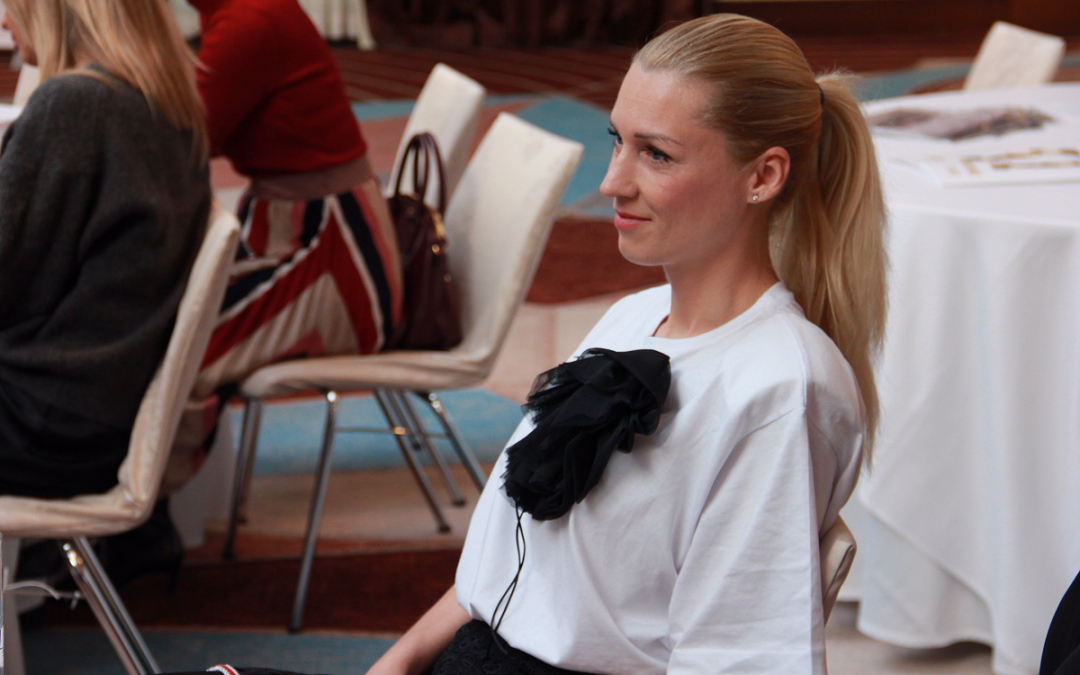
Feb 27, 2020
Slovak weekly magazine in cooperation with RTVS -Slovak national TV and Radio and with the Slovak National Theater presented the nominees of the twelfth year of the SLOVENKA OF THE YEAR.
JUDr. Alžbeta Husarovič, MHA, MPH is one of this year’s laureates for the Slovakian Women of the Year. She is the President of the civic association Porážka.sk, which is dedicated to raising stroke awareness and helping patients and their families with information about physiotherapy, speech therapy, psychology, social assistance. The aim of this organisation is to improve patients’ quality of life and lead them to self-sufficiency.
“I was very pleased and amazed when I became the Nominee for the Slovak Woman of the year 2020. I didn’t think that somebody is even noticing me for what I am doing. And I am doing this activity with love” said Alžbeta, adding: “This event Slovak Woman is a competition but I don’t consider it so. For me, it is a opportunity for woman to show others what the can do!”
The Official Press Release “Slovakia 2020”
We have no idea yet of which successful Slovak woman will be awarded in the following categories: Business and Management, Arts and Culture, Media and Communication, Science and Research, Education, Support for Young Talents, Healthcare, Sport and Charity, since all laureates are inspirational ladies, who will be introduced to you over the next few weeks.
In addition, this year the nomination committee will award the title of Absolute Slovak Woman of the Year and the Special Lifetime Achievement Award for Slovakia. We will come to learn the winning names during the gala evening in the historical building of the Slovak National Theater and live broadcast of RTVS – Slovak National TV and Radio on May 31, 2020.
Throwback
Historically, the first Slovak Woman of the year in 2009 became the head physician of the 2nd Pediatric Clinic of the Faculty of Medicine and the Pediatric University Hospital with the Policlinic in Bratislava MUDr. Anna Hlavatá, and so far the last – Slovak of the year 2019 – is Andrea Gontkovičová.
Voting from today at www.slovenkaroka.sk
Starting today, it is possible to vote for individual nominees at www.slovenkaroka.sk and from next week also in the weekly Magazine Slovenka. Vote for your favorite and win an exclusive 8-day vacation stay for 2 people at Labranda Coral Beach 4 * with all inclusive in attractive Gambia from CK Hydrotour.
<End>
Image credits: Porazka.sk
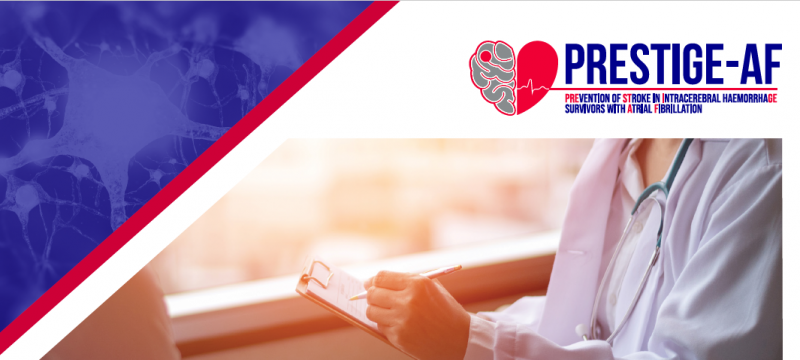
Feb 25, 2020
Stroke is one of the largest public health challenges around the world, and occur when the blood supply to the brain is interrupted, such as through a clot or a brain bleed. It is the most common cause of adult-acquired disability, the second leading cause of death globally and the second most frequent cause of dementia. In addition, its impact is expected to further increase in the coming decades due to the ageing population.
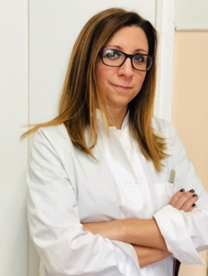
Dr Eleni Korompoki, MD, PhD, FESO, PRESTIGE AF researcher
We spoke with Dr Eleni Korompoki, MD, PhD, FESO, about a €6.9m worth EU funded research project, aimed at patients with atrial fibrillation (AF), a common heart condition which causes irregular and abnormally fast heartbeat, who have previously had a stroke caused by bleeding in the brain (termed intracerebral hemorrhage or ICH). The Prevention of Stroke in intracerebral hemorrhage survivor with Atrial Fibrillation (PRESTIGE-AF) brings together scientists and clinicians across Europe with the goal of reducing the risk of further stroke in this group of patients. Dr Korompoki is a Clinical Research Fellow in Stroke Medicine at Division of Brain Sciences, Imperial College London.
SAFE: If you were to explain the project’s aim to a person without any medical background, what would you say?
EK: We are conducting a research study to show whether or not patients who have had a brain hemorrhage should be given anticoagulant medication to prevent blood clots that can be caused by a heart arrhythmia called atrial fibrillation. Currently we do not know the best way to prevent strokes in these patients.
SAFE: What types of partner do you need to carry out a project like this?
EK: This project is covering many specialties, so we need to have partners with experts in stroke, cardiology, genetics, biomarkers, neuroimaging and predictive modelling to name just a few!
SAFE: Can you briefly describe your role in the project?
EK: I am part of the central clinical trial team who assist all of the (70!) hospitals who recruit to our clinical trial. I am available to provide medical support, answer questions about patient eligibility and review the safety reports (called adverse events) as we closely monitor all health complaints that patients have whilst they are in the study. Towards the end of the project I will be involved with data analysis and writing up the results of the trial.
SAFE: What (if any) are the difficulties with carrying out the work?
EK: Stroke is the leading cause of disability in Europe and strokes caused by bleeding tend to be more disabling. Therefore it can be a challenge to identify patients who are willing and able to take part in a study like this.
SAFE: What personally attracted you to be in this project?
EK: I have been involved in stroke research for more than 10 years, focusing on stroke prevention and heart-brain connection. As a physician and researcher, I strongly believe that prevention is the key element for well- being. PRESTIGE-AF is a prevention trial targeting an individualised approach and better quality of life after stroke. The trial will also address important aspects such as gender differences, and patients’ attitudes and preferences.
As part of PRESTIGE-AF consortium I have plenty opportunity to interact with internationally recognised experts of ten leading European academic institutions, to work together with a multidisciplinary team from different European countries gaining a lot of experience and improving my scientific skills.
SAFE: When this project ends, what do you expect to change, i.e. how it will reflect on stroke treatment?
EK: We expect to be able to provide evidence based treatment to patients who have had a brain hemorrhage and have atrial fibrillation, the most common cardiac arrhythmia. In addition we hope that we will be able to start using a more person centered approach with these patients using information learnt from looking at brain scans, blood tests, gender differences and psychological aspects.
PRESTIGE-AF has received funding from the European Union’s Horizon 2020 research and innovation programme under grant agreement No. 754517.
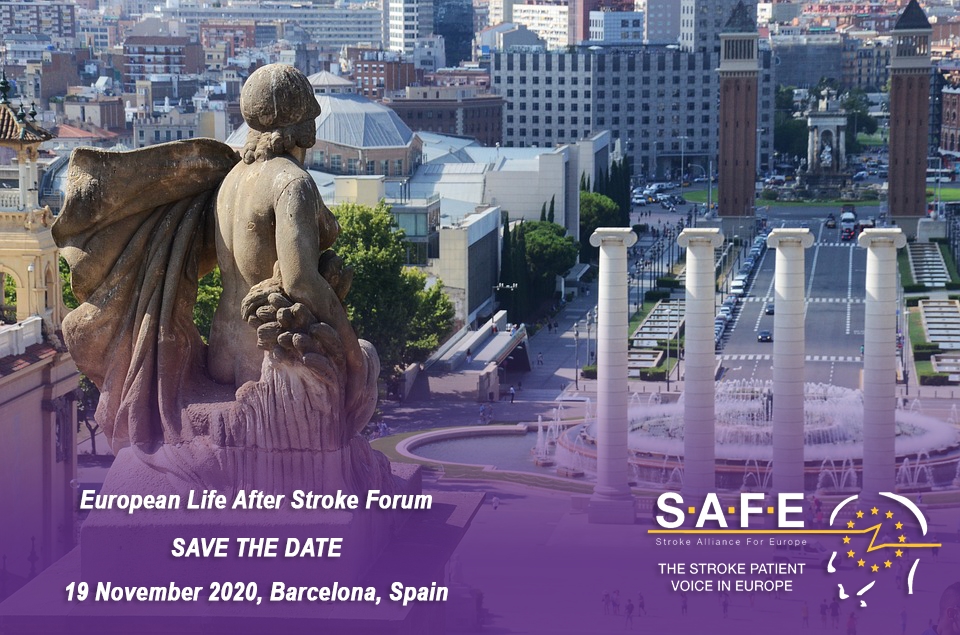
Feb 20, 2020
Life after stroke is a key priority within SAFE’s strategy. It is our pleasure to share with you the date of the first European Life After Stroke Forum – the 19 November 2020 in Barcelona, Spain.
This first European Life After Stroke Forum is driven by the need to implement the Stroke Action Plan for Europe and to create a network of stakeholders involved in professionally researching, advocating and providing evidence for improved life after stroke care.
SAVE THE DATE – EUROPEAN LIFE AFTER STROKE FORUM, 19 NOVEMBER 2020, BARCELONA, SPAIN
We hope we could get you to support the European Life After Stroke Forum by sharing this information with people you know.
When? 19 November 2020
Where? Hotel Catalonia Barcelona Plaza, Barcelona, Spain
Who can attend? Organisations and individuals who operate in the life after stroke area and are research, policy, advocacy or support oriented.
How to register? The registration link will be available soon. Stay tuned!
Please put this date in your calendar and stay tuned for more information that will follow.
We hope to welcome you to Barcelona,
SAFE team
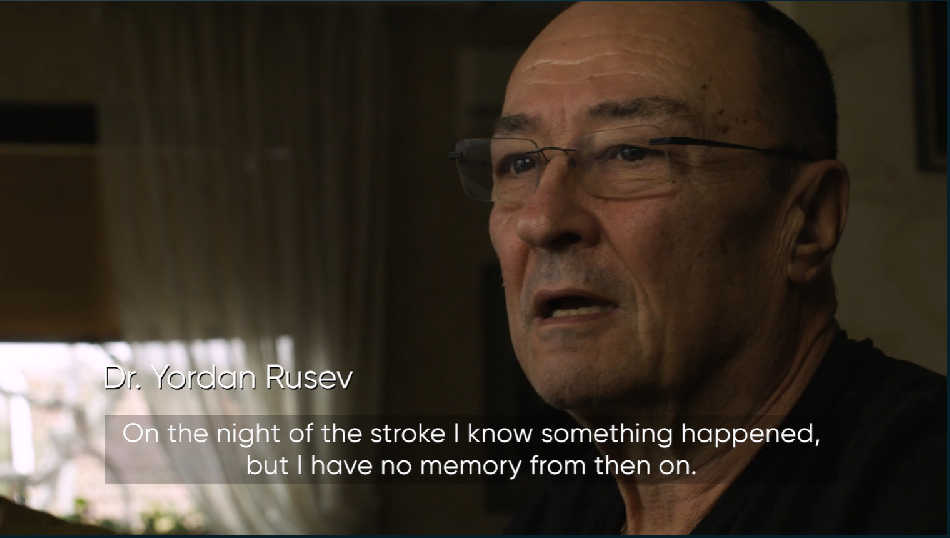
Feb 20, 2020
Turning the Tide is a series of 26 mini-films from 24 countries, presenting the bold actions being carried out by communities and organisations to take on the world’s biggest killers – non-communicable diseases, like cancer, diabetes and lung disease – and bring better health for all.
Time is everything when dealing with stroke patients, but many hospitals are not “stroke ready”. Every 30 minutes a stroke patient who could have been saved, dies or is permanently disabled, because they were treated in the wrong hospital.
The Angels Initiative is building a global community of stroke centres and stroke-ready hospitals, working every day to improve the quality of treatment for every stroke patient. The story in this video would have been very different if it wasn’t for a joint effort of the Angels Community.
The man who can be seen in the video is one of the lucky ones. Both he and his wife are medics, so, when he collapsed from a stroke in his home in Sofia, Bulgaria, his wife instantly recognised what happened and knew that she had to act quickly. He was swiftly taken to the nearest stroke-ready hospital and was treated immediately by the responding doctors. Thanks to a swift reaction from their colleagues, medics who work in the stroke-ready hospital and to the timely received treatment, the man was able to recover. “I started to go shopping. I started driving. I started to feel like a normal human being again. These days I realise how blessed I was to have fully recovered to be with my family, my children and my grandchildren” he said.
Please watch the video and see how having stroke-ready hospitals helps #TurningTheTide.
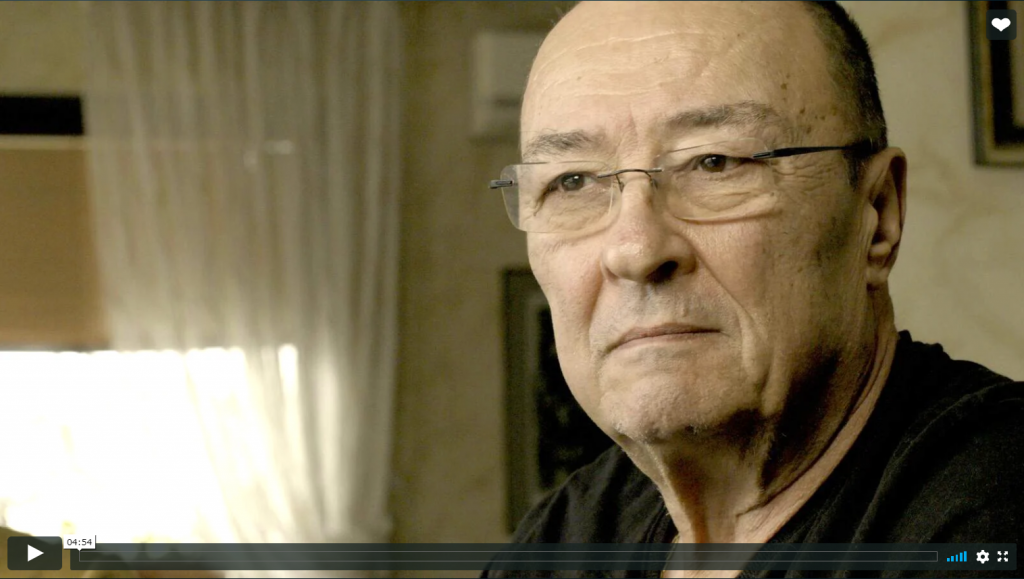
The video was produced by the NCD Alliance and BBC StoryWorks
The Angels Initiative, launched by Boehringer Ingelheim in partnership with the European Stroke Organisation (ESO), and the World Stroke Organisation (WSO), the Stroke Alliance for Europe (SAFE) and others is set to improve acute stroke care, by increasing the number of patients treated in stroke ready hospitals and optimising the quality of treatment in all existing stroke centres. For more information about Angels Initiative, please visit www.angels-initiative.com
Image source: The video print screen











